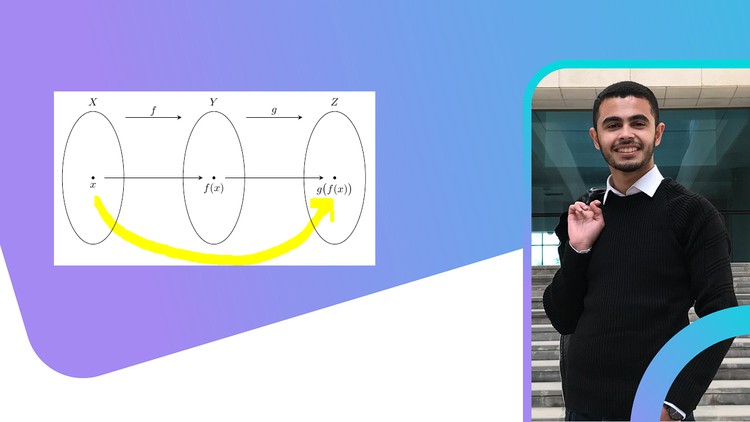
What you will learn
Define the composition of functions
How to find the composition of functions
How to find the domain of composition of functions
all kinds of questions about composition of functions
Description
In mathematics, function composition is an operation that takes two functions f and g and produces a function h such that h(x) = g(f(x)). In this operation, the function g is applied to the result of applying the function f to x. That is, the functions f : X → Y and g : Y → Z are composed to yield a function that maps x in X to g(f(x)) in Z.
The composition of functions is always associative—a property inherited from the composition of relations.
That is, if f, g, and h are composable, then f ∘ (g ∘ h) = (f ∘ g) ∘ h. Since the parentheses do not change the result, they are generally omitted.
In a strict sense, the composition g ∘ f is only meaningful if the codomain of f equals the domain of g; in a wider sense, it is sufficient that the former be a subset of the latter.
Moreover, it is often convenient to tacitly restrict the domain of f, such that f produces only values in the domain of g. For example, the composition g ∘ f of the functions f : ℝ → (−∞,+9] defined by f(x) = 9 − x2 and g : [0,+∞) → ℝ defined by {displaystyle g(x)={sqrt {x}}} can be defined on the interval [−3,+3].
Compositions of two real functions, the absolute value, and a cubic function, in different orders, show a non-commutativity of composition.
The functions g and f are said to commute with each other if g ∘ f = f ∘ g. Commutativity is a special property, attained only by particular functions, and often in special circumstances. For example, |x| + 3 = |x + 3| only when x ≥ 0. The picture shows another example.
The composition of one-to-one (injective) functions is always one-to-one. Similarly, the composition of onto (surjective) functions is always onto. It follows that the composition of two bijections is also a bijection. The inverse function of a composition (assumed invertible) has the property that (f ∘ g)−1 = g−1∘ f−1.
Derivatives of compositions involving differentiable functions can be found using the chain rule. Higher derivatives of such functions are given by Faà di Bruno’s formula.
Content